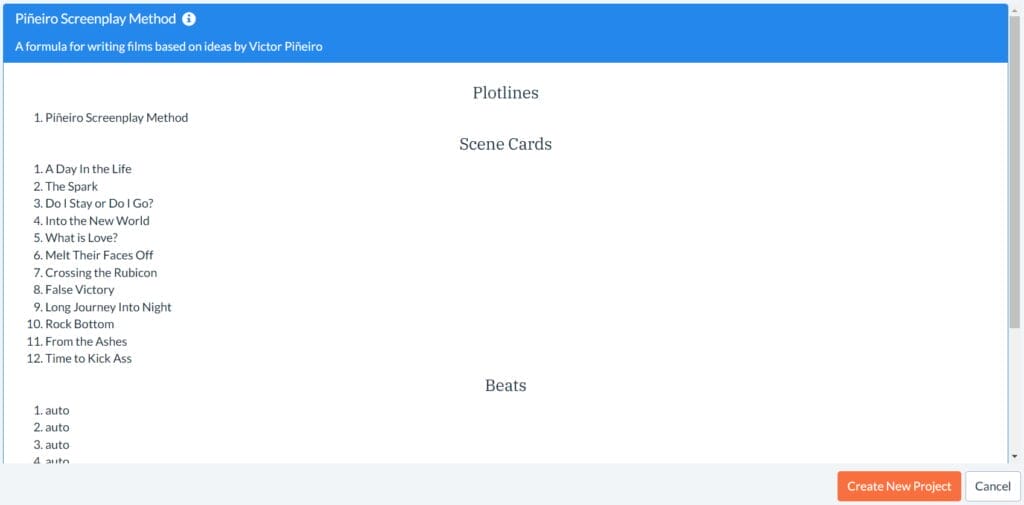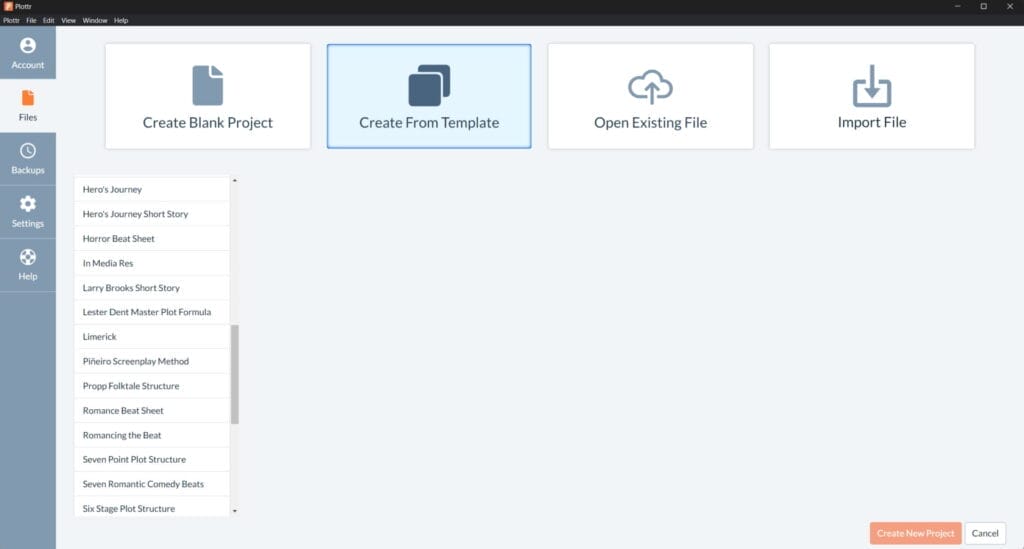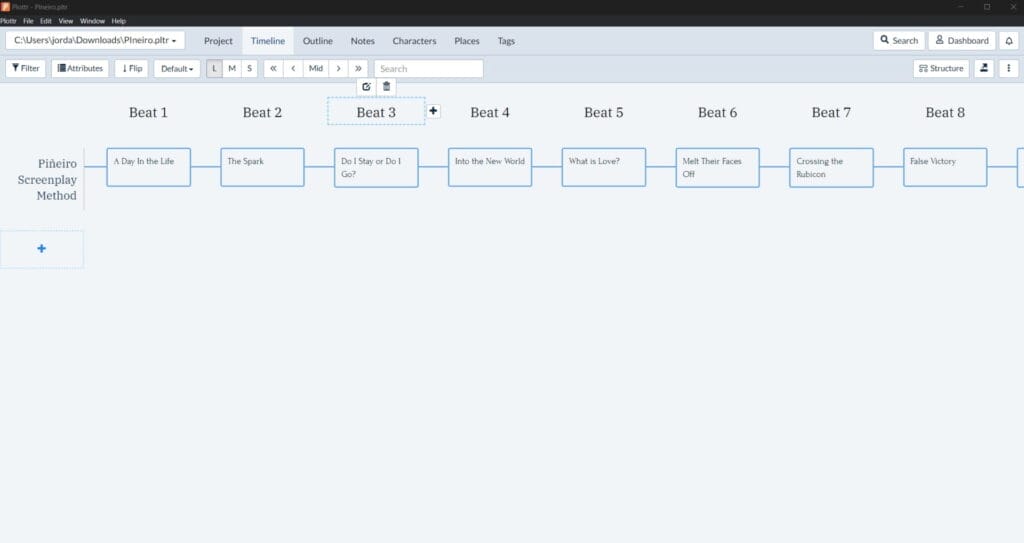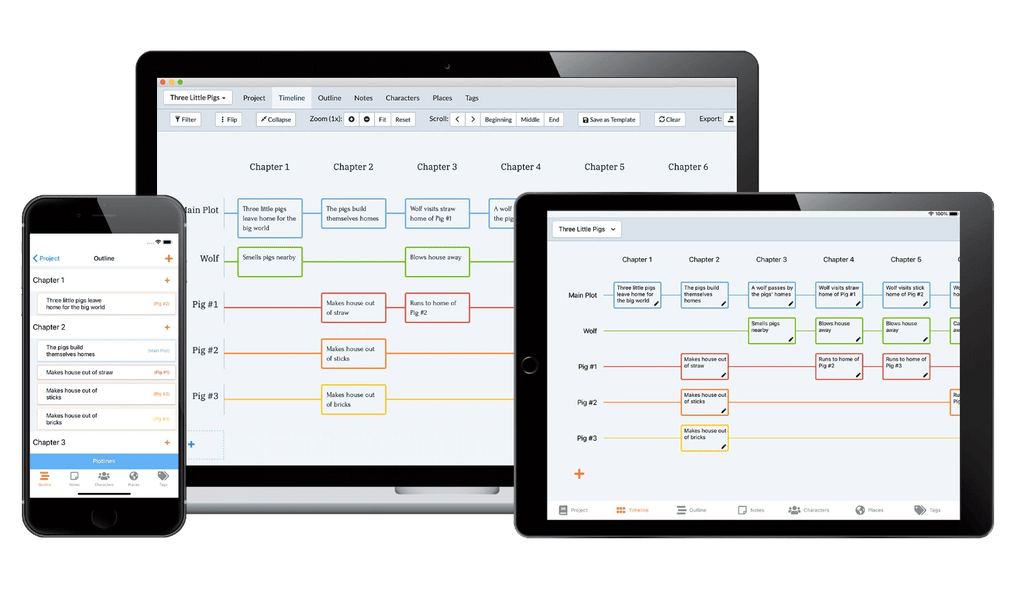Are you a novel writer interested in trying something new? Or maybe you’ve always dreamed of writing screenplays for movies or TV — but have no idea how to go about it?
In either scenario, the Piñeiro Screenplay Method might be just the thing for you. Keep reading to learn more about this plot structure, and how to use a Plottr template based on its story beats.
What is the Piñeiro Screenplay Method?
The Piñeiro Screenplay Method is named after Victor Piñeiro, an author, strategist, and the Director of Digital Innovation at HBO Max. It breaks down the elements of an effective screenplay into an easy-to-follow plot structure that can be used by beginners and experts alike.
Who is the Piñeiro Screenplay Method for?
Piñeiro’s method can be used by pretty much anyone who wants to learn the building blocks of a great story, but it’s especially well-suited to writers who prefer to create a detailed and organized story structure before they begin writing. (In other words, it’s likely to appeal more to plotters than pansters.)
The structure offers a great introduction to writers who are new to writing for the big screen, but it also offers helpful guideposts for experienced authors who are simply looking to organize the puzzle pieces of their next story.
Watch Plottr Education Lead author Troy Lambert give a deep dive into this method, and keep reading below:
Plot Points of the Piñeiro Screenplay Method
According to Pineiro, most movies — and stories in general — tend to have a series of “signposts” that move the plot forward and let you know where you are in the plot at a given point.
There are often twelve signposts in a movie. Let’s take a closer look at each of them, along with a few examples to help you see what they should include.

Beat #1: A Day in the Life
This is where you depict the hero’s ordinary world, introduce all the main characters, and highlight the hero’s notable wants and needs. Make sure your hero is three dimensional — with flaws, hopes, fears, and a unique personality.
Beat #2: The Spark
Something happens to flip the hero’s world on its head. Whatever the event, it must have a profound effect on the hero.
This could feature something external, like the sudden death of a loved one, a natural disaster, or a kidnapping. But it might also be some more internal shift that shakes the confidence of the hero.
For example, in the children’s movie, Toy Story, Woody the cowboy is terrified he will lose his treasured position as the favorite toy when a fancy new space man toy arrives.
Beat #3: Do I Stay or Do I Go?
The hero must decide whether to embark on the adventure or face the new challenge presented by the spark. Usually, they want to say no, but are forced to say yes. Of course, willing or not, there must be formidable obstacles standing in the way.
Maybe the hero wants to rescue his kidnapped wife, for example, but the government has confiscated all the weapons he’d need to succeed.
Beat #4: Into the New World
The hero boldly ventures into the new world or accepts the new challenge, which thrusts them into a totally unfamiliar situation or environment.
This might be a new state, culture, or planet; it might simply mean forcing a shy heroine to confront a powerful authority figure.
Whatever it is, take care to show the viewer just how much has changed for your protagonist, and let them experience the hero’s excitement and trepidation right along with them.
Beat #5: What is Love?
The new world brings with it a few new characters, including a love interest. This new person usually represents what the hero needs, not necessarily what they want.
Remember: needs are internal. Give careful thought to what it is your hero truly needs. Is it courage, friendship, self-respect?
In the comedy movie, Groundhog Day, what the hero wants is to free himself from an endless time loop and move on to tomorrow. But what he really needs is to develop an appreciation for today.
Beat #6: Melt Their Faces Off
This is the stage where the hero begins to enjoy their new adventure or power, and the audience is fully engaged.
In most movies, fans talk about this signpost the most — and movie trailers are often based on scenes from this section. It’s where the story really finds its groove and takes viewers on an enjoyable ride through the plot, alongside your characters.
Beat #7: Crossing the Rubicon
This is the midpoint of the movie, when the hero crosses the point of no return. They do something truly significant — something they can’t undo.
Maybe the hero releases a deadly germ from a lab, gets arrested for espionage, or becomes hopelessly lost in the jungle. Whatever the incident, it will soon trigger a nightmare consequence.
Beat #8: The False Victory
Right before your hero plunges into the above-mentioned nightmare, they have a moment of clarity when things don’t look quite so bad. Maybe it even seems as if they’ll soon prevail. Maybe your hero foiled a portion of the villain’s plan — but without realizing that development was an intentional part of a much larger scheme.
On the other hand, this could be a moment of false defeat. Maybe your hero succeeds in breaking out of prison, only to be nabbed again before a true escape.
Beat #9: Long Journey Into Night
Here’s where things go from bad to worse. The hero is losing both their external and internal struggle. The enemy is stronger than ever.
Your lost-jungle protagonist is now threatened by vicious tigers. Everything they do seems to fail and they have no idea what to do about it.
Beat #10: Rock Bottom
Things are at their very worst. The villains are winning.
The hero who escaped prison is now placed in a high security cell from which there is no chance of escape. On top of everything else, they’re ditched by their love interest. They still fight to overcome the impossible odds, but all hope seems to be lost. This is the part when the audience is holding their breath.
Beat #11: From the Ashes
The hero realizes their flaw, learns their lesson, and realizes they can’t give up. This might be due to an epiphany, the discovery of new information, or a pep talk from a mentor.
Whatever the cause, the realization bolsters the hero’s determination and they formulate a new plan to defeat the enemy once and for all. This is often when the love interest makes a reappearance and lends the hero a hand.
Beat #12: Time to Kick Ass
The hero faces the villain once again and finally conquers. By winning, they have changed the world — either the actual world or maybe just their own.
This is the moment your audience has been waiting for, so make it exciting, dramatic, and satisfying. Show how the villain has been vanquished, and how the hero has grown and changed for the better. Let the audience celebrate these changes by allowing them to see the hero enjoying a return to normal life once again.
Be sure to tie up any loose ends involving other important characters, too, before bringing the story to an end.
How do you use the Piñeiro Screenplay Method in Plottr?
Ready to jump in? First, ensure you have Plottr set up on your system (or begin your free trial) and open the desktop or browser version of the application.
Once you’re ready, follow these easy steps to get started with the Piñeiro Screenplay Method Template:
- Step 1: Within the Files tab (on the left side of your screen), click Create From Template

- Step 2: Choose Piñeiro Screenplay Method from the scrolling list of templates on the left, then click Create New Project in the bottom right corner

- Step 3: Name your project. Once it is saved, you’ll be able to access it from your Plottr dashboard at any time
- Step 4: Fill in the plotline (image above) scene cards with your brainstormed ideas
If you’d like to add further plotlines to your story, try our other templates such as the Freytag’s Pyramid Plot Template.
Ready to Write Your Own Blockbuster?
Hopefully this brief dive into the Piñeiro Screenplay Method has given you a great foundation for penning your own story.
Now all that’s left to do is start a free trial in Plottr and give the template a try. Remember to share your thoughts in the comments section!








Comments